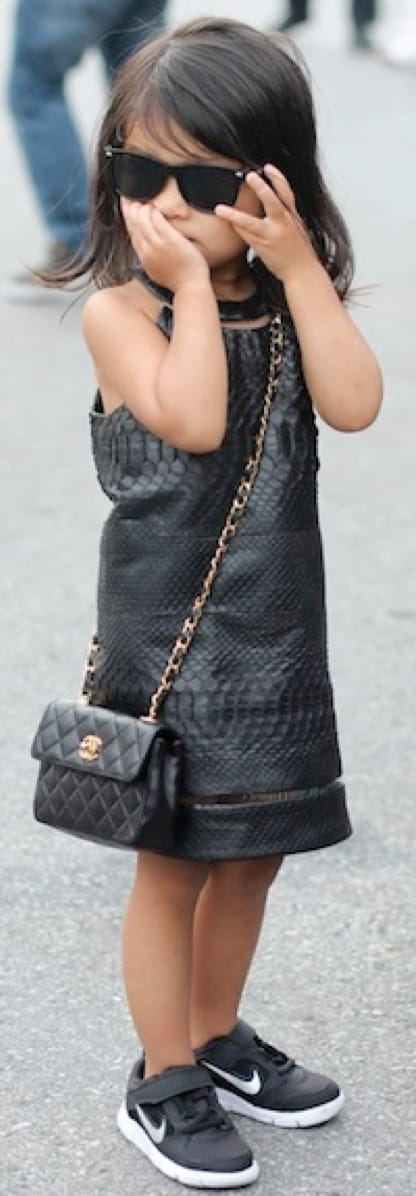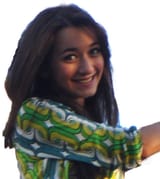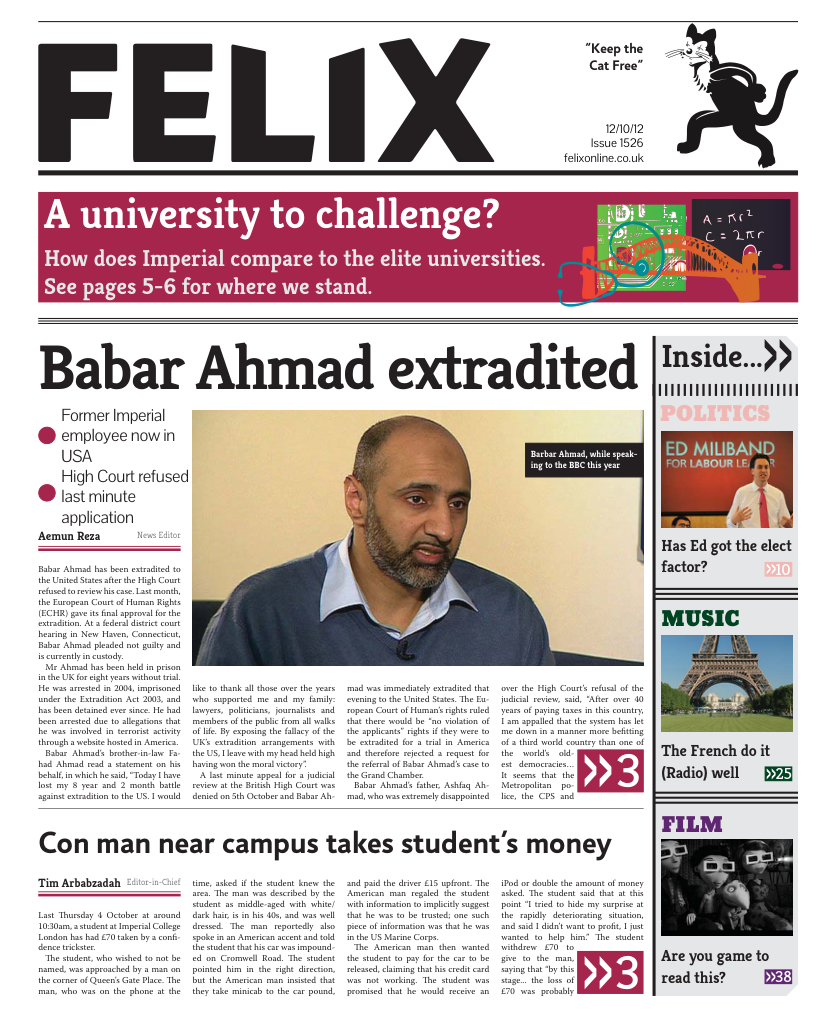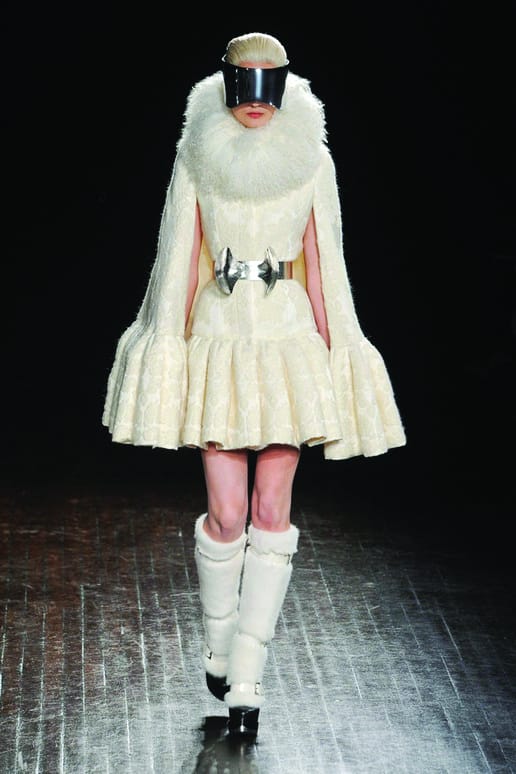A guide to blagging fashion month
If one more person asks me what ‘actually happens’ during fashion week I will stub you with my Manolo

For those unfamiliar, fashion month is a bi-annual occasion made up of fashion weeks in the four fashion capitals, where the fashion community (editors, buyers, bloggers and celebrities alike) collects to view the major designers’ collections for the following season. This September saw the presentations for spring/summer 2013, beginning in New York.
The major trend-setting collections to watch in New York are Marc Jacobs and Alexander Wang – the new school. Wang went with a predictably monochrome palette, as well as his signature streamlined sporty silhouette – nothing new to report there, bar some cutout detailing and (the highlight of NYFW) his devastatingly chic 3-year-old niece, Aila, in the front row, complete with black alligator print halter dress, mini Chanel 2.55, Ray Ban Wayfarers and tiny Nikes.
Jacobs’ show served as a prelude to his offering at Louis Vuitton. Starting at home at his own label, he showed thick stripes in a Factory Girl-inspired show, with flared shapes and simple styling – hair backcombed at the crown and tied into a low ponytail, with thick black eyeliner. Later, at his show for Louis Vuitton in Paris, he showed an amped-up version: more sixties shapes but this time, bold checks both in chic monochrome and in 60s brights: avocado green and lemon yellow. The Damier print handbags also found themselves reincarnated in the new colours.
Lifetime members of New York, and stars of red carpet glamour, Oscar de la Renta and Ralph Lauren did not disappoint. The first half of Lauren’s show might have appeared like a Spanish costume drama, complete with fringed piano shawls, matador jackets and flamenco ruffles. However the Latin theme came into its own for eveningwear: Karlie Kloss waved her fan-shaped clutch bag wearing a crisp white shirt and floor-length black sequinned crochet skirt, topped with a black felt boater, followed by fluttering white organza ruffles, and a red fishtail dress with a flouncing black bolero jacket.
Oscar’s show had more variety – from perfectly cut black gowns and a Cruella DeVil monochrome sheath dress to the full-blown embellished glory of a turquoise blue feathered ballgown and a strapless fuschia number embroidered with green pom-poms – a sure bet for the red carpet. Anna Wintour graces very few shows at London Fashion Week – despite being London-born, she only began attending LFW a couple of seasons ago. Now though, London is home to some exciting designers – Erdem, Christopher Kane, and Christopher Bailey for Burberry Prorsum. Other British labels, including Stella McCartney, Alexander McQueen and Gareth Pugh have since decamped to Paris, considered a more prestigious place to show.
Kane and Erdem shared a common pallete of sweet pastels, though Erdem punctuated his with flashes of fluorescent brights and Kane with touches of punk – gaffer tape, filigree rubber, and leather. The pieces were trim and ladylike, yet modern in fabric and cut.
At Burberry, Bailey seems to be moving the brand out of stodgy practicality and into a modern form of British glamour. Shapes were 1940s-inspired – capes and capelets; skirts to the knee. However the show was anything but demure: shorts were super-short, colours were brassy metallics and rich brights.
Milan is home to the iconic Italian brands: Gucci, Fendi, Prada, Versace, and Dolce and Gabbana. Each collection walked to the beat of a completely unique drum: at Prada we were in Japan, at Dolce in Sicily, and at Versace it was a vampy Italian incarnation of Coachella. Then, Fendi showed graphic, fur-trimmed 60s silhouettes, and at Gucci there were bright colour-blocking and 70s shapes. However, the high point of fashion month was certainly Paris. Gareth Pugh was startlingly beautiful and romantic yet severe, with blood-stained eye-makeup – to me it screamed Lilith-chic. Vampires and fang-bangers everywhere: Pugh is where it’s at. Balenciaga was thrilling and sexy, with flashes of skin in plentiful supply: Ghesquière showed plunging sweetheart necklines, bare midriffs under suits, and skirts cut shockingly high on the thigh. There were handbags at dawn at the Saint Laurent show. When Hedi Slimane didn’t offer New York Times Fashion Editor Cathy Horyn a seat at his first collection at the house, she proceeded to review his show as lacklustre (it was). Haider Ackermann continues to be a Paris highlight.
So, what’s the parting message? What should you be stocking up on for next season, and what trends are going to look so old that you won’t even be able to deal with it? The simple conclusion to fashion week is that each editor, stylist, buyer and consumer draws their own conclusion. There are some trends that surface as THE trends for the season, but some fade into the ether. Block colours, monochrome and beautifully cut trousers will be a highlight, but the fact is that what trickles down into the hands of the ordinary consumer is dictated largely by the major editors and buyers. And also what the people at Zara and Topshop think that you might like.









